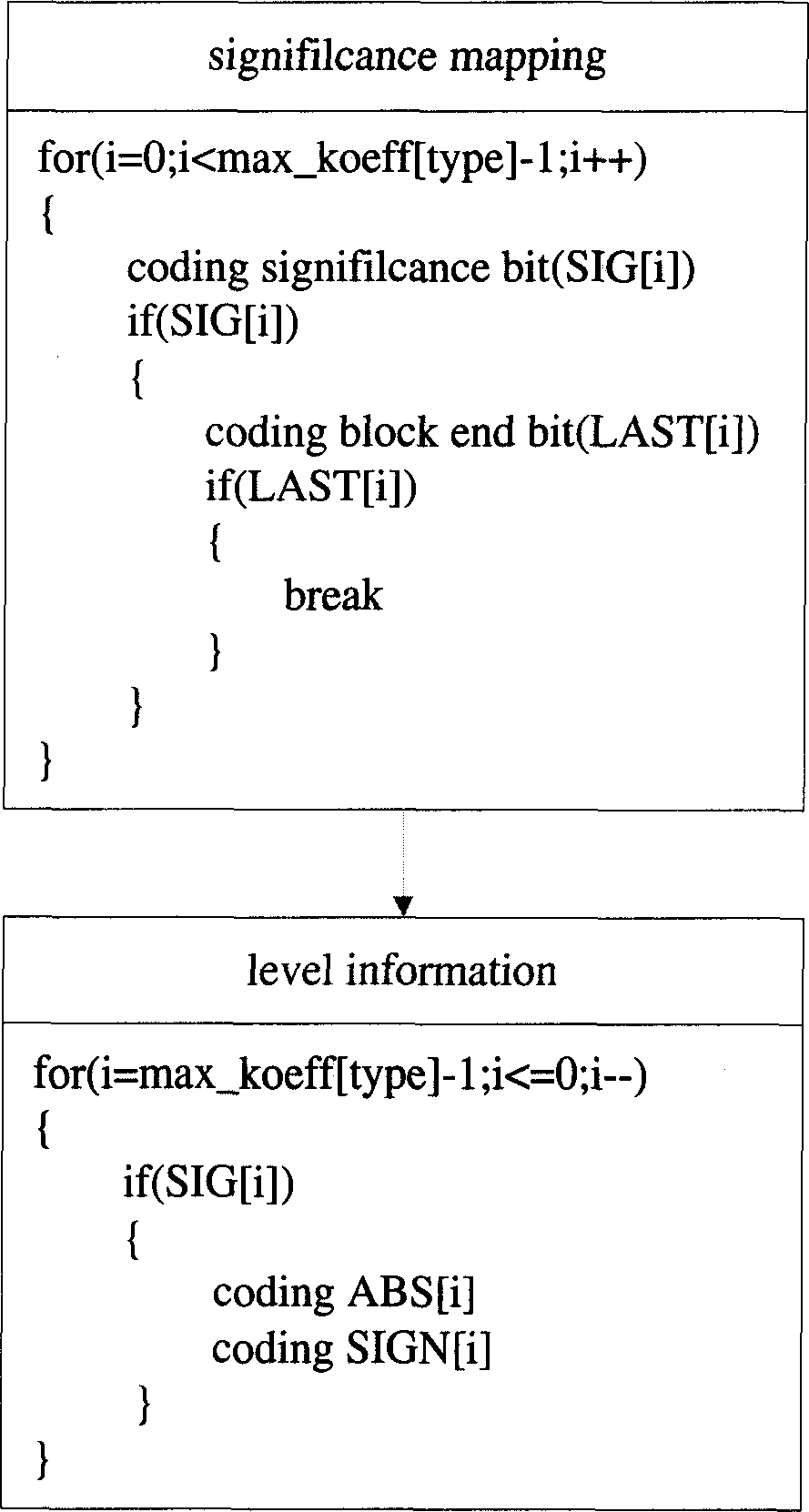Binary and probability model selecting method for use in image arithmetic code
A probabilistic model and arithmetic coding technology, applied in the field of image coding, can solve the problems of high compression efficiency, slow implementation speed, and high complexity of arithmetic coding
- Summary
- Abstract
- Description
- Claims
- Application Information
AI Technical Summary
Problems solved by technology
Method used
Image
Examples
Embodiment 1
[0065] Embodiment 1: Binarize the position value of the last non-zero coefficient into 2 layers, ie N=2. The first layer is divided into 8 intervals, namely k 1 =8. The second layer is divided into 8 intervals, namely k 2 =8. The unary code of layer 1 is as follows. Set the initial value of the serial number of the first-level unary code probability model to 0, that is, A 1 =0, the serial number of the probability model used is 0~6, one probability model for each bit, the probability model used is as follows.
[0066] last non-zero
[0067] Table four
[0068] last non-zero
[0069] Table five
[0070] Applying this implementation method to the example in FIG. 4 is specifically as follows: the last non-zero coefficient value 11 is within the interval of 8-15 in the first layer. The intervals from 8 to 15 in the second layer are divided into 8 intervals, the interval length is 1, and 11 is in ...
Embodiment 2
[0073] Embodiment 2: Binarize the position value of the last non-zero coefficient into 6 layers, that is, N=6. Each layer is divided into 2 sections. The unary code for each interval is 0 or 1. At this time, the result of the unary code obtained by binarization is equivalent to the binary value of the position value of the last non-zero coefficient. Set the initial value of the serial number of the first-level unary code probability model to 0, that is, A 1 =0, the serial number of the probability model used is 0. The relationship between the initial value N of the probability model number of the nth layer and the initial value M of the model number of the n-1th layer
[0074] As follows: s is the unary code of the n-1th layer, which is 0 or 1.
[0075] If s=0, N=M×2+1
[0076] Otherwise s=1, N=M×2+2
[0077] Tier 1
layer 2
layer 3
layer 4
layer 5
Layer 6
6 layers of unary code
0
0
1
0
1
1
Probabi...
PUM
 Login to View More
Login to View More Abstract
Description
Claims
Application Information
 Login to View More
Login to View More - R&D
- Intellectual Property
- Life Sciences
- Materials
- Tech Scout
- Unparalleled Data Quality
- Higher Quality Content
- 60% Fewer Hallucinations
Browse by: Latest US Patents, China's latest patents, Technical Efficacy Thesaurus, Application Domain, Technology Topic, Popular Technical Reports.
© 2025 PatSnap. All rights reserved.Legal|Privacy policy|Modern Slavery Act Transparency Statement|Sitemap|About US| Contact US: help@patsnap.com



